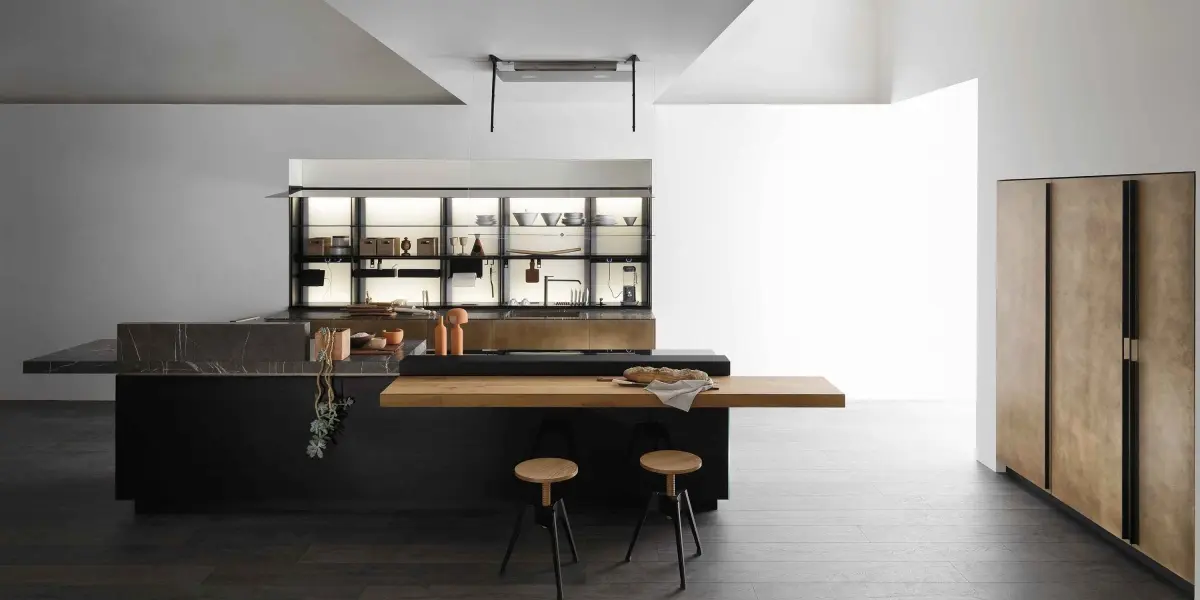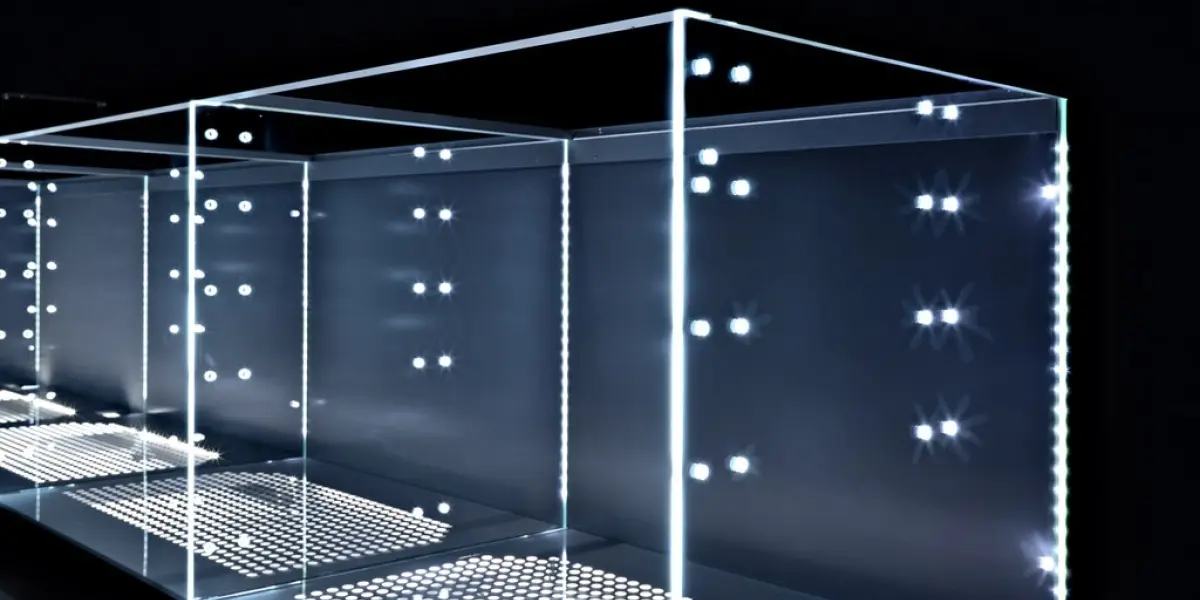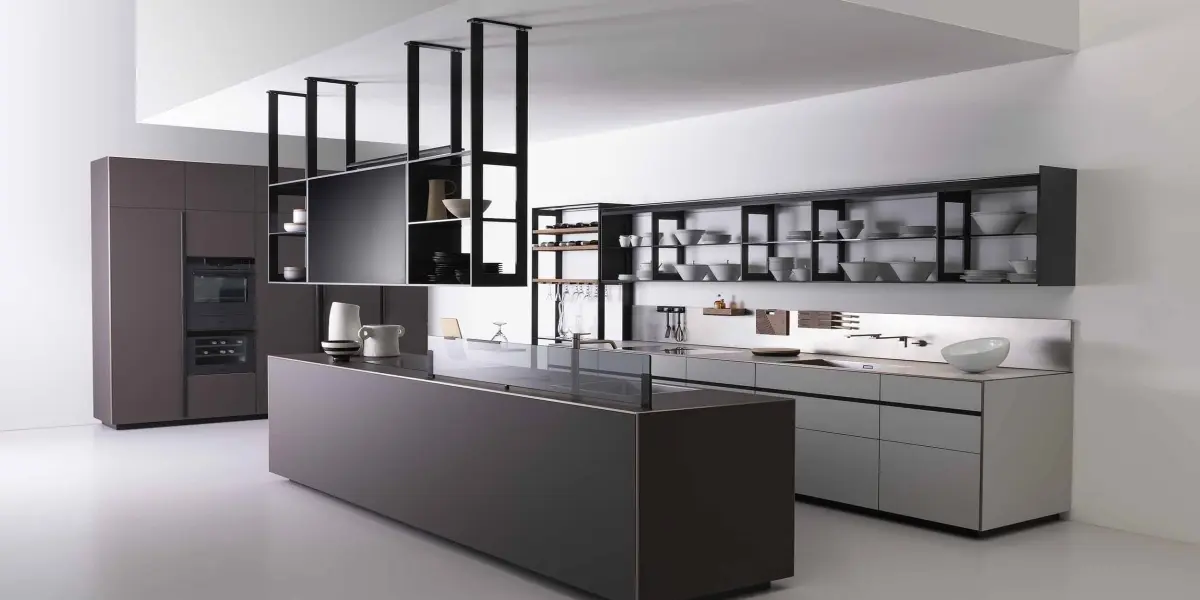Business, innovation, infrastructure

The Artematica door
Research has focused on the element that most determines the structure of a kitchen, the door, and has led to an avant-garde technical-designing solution.
The door consists of an anodised aluminium structural frame, made only with mechanical joints, and an aesthetic panel welded to the frame invisibly from the outside.
Artematica in Vitrum
Artematica is the protagonist of another historic and innovative step: the creation of an all-glass kitchen – Artematica Vitrum – a true milestone that marked another milestone in the world of design, so much so that it was exhibited at the MoMA in New York (2008).
Taking advantage of the greater height of the glass compared to the frame structure, an invisible and ergonomic opening has been created at the top of the door. The glass appears suspended and gives a feeling of surprising lightness.


The dematerialisation in Riciclantica
Dematerialisation reaches its maximum expression here: the lightest and thinnest door in the world with a thickness of only 2 mm is inserted on the aluminium frame – resistant to water, steam and heat.
